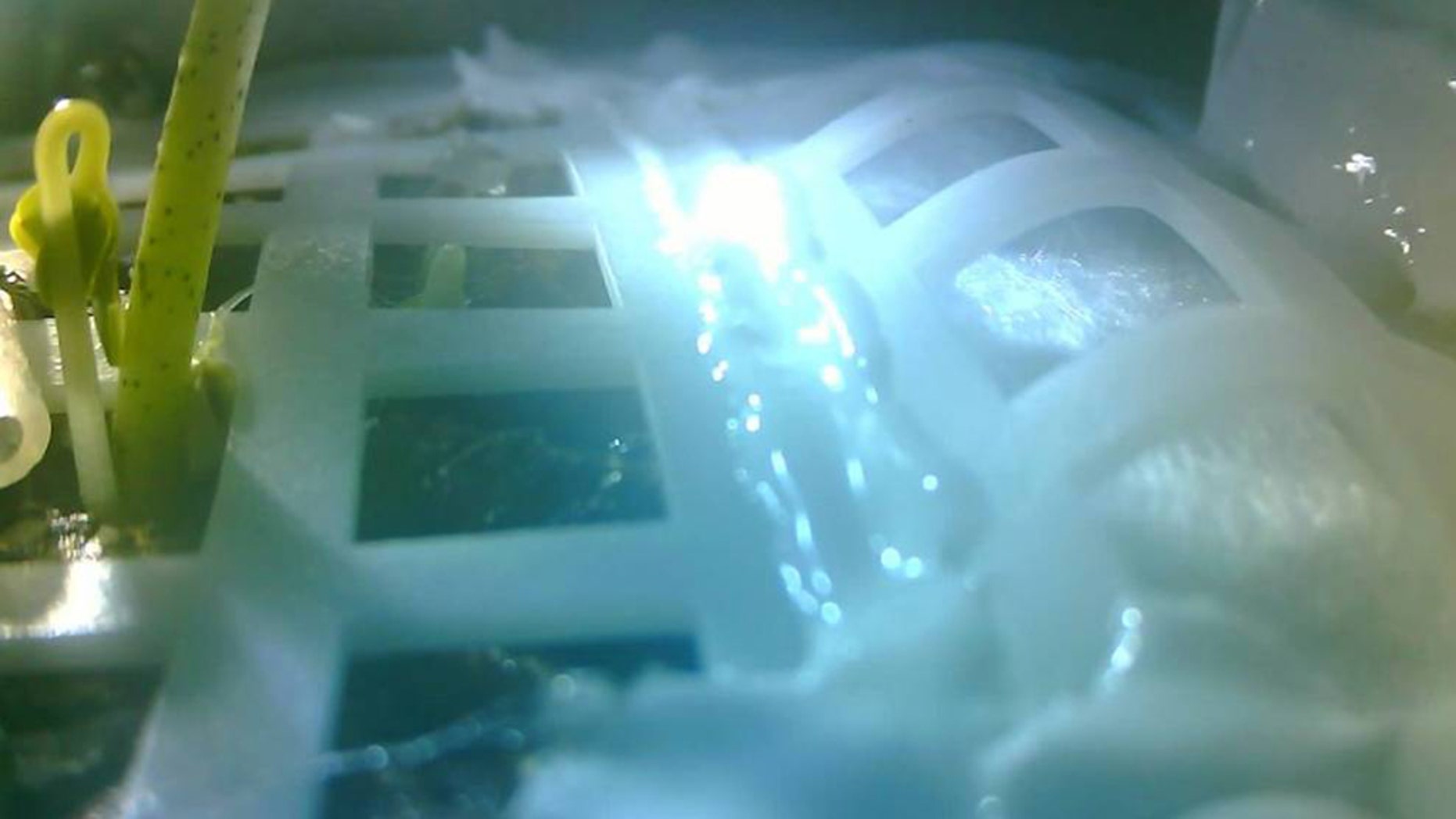
(Credit: Chinese Lunar Exploration Program/ CHONGQING UNIVERSITY)
China has sprouted a cotton seed on the moon – and hopes to be growing potatoes on the dark side of Earth's neighbor within the next 100 days, it's been revealed.
When its Chang’e 4 spacecraft touched down on the lunar surface it was carrying a £1m airtight container designed for growing crops in shocking conditions.
The 18cm high aluminum alloy cylinder – called a moon surface micro-ecological circle – contains silkworm eggs and seeds for potatoes and cress.
CLICK ON THE SUN FOR MORE
Chinese scientists now hope both plants will root and sprout in the container, producing the first flower ever grown on the space rock.
They hope to see the results towards the end of a 100-day experimental period, according to the country's space agency.
Last night, they announced their first breakthrough publishing a picture of cotton seed, bought up on Chang’e 4 actually growing.
China Daily tweeted: "The latest test photo shows a cotton seed brought to the moon by China's Chang'e 4 probe has sprouted."

(Credit: Chinese Lunar Exploration Program/ CHONGQING UNIVERSITY)
MOTHS TO HATCH IN SPACE
Meanwhile, the silkworm eggs will also hopefully hatch into moths, reports the SCMP.
However, cultivating the crops won’t be easy as temperatures on the moon’s surface can soar to 100 degrees Celsius (202 degrees Fahrenheit) in the day and drop to minus 100 degrees at night.
Professor Xie Gengxin, the Chinese scientist in charge of the lunar plant experiment, said if successful, the project would signal that China was catching up in space exploration.
Earlier today China has released incredible footage of its historic touchdown on the icy far side of the moon.
Video taken from the Chang’e-4 probe shows its view as it hovered over Earth's rocky neighbor before quickly dropping toward its surface.
It carefully adjusts its descent to avoid ditches and dents as it plummets into the moon's asteroid-battered Von Kármán Crater, which Chang’e-4 landed in on January 2.
Scientists think the 115-mile wide crater holds moonrocks with unusual chemistry that could help us learn more about the natural satellite's violent past.
This story originally appeared in The Sun.
Source: Read Full Article